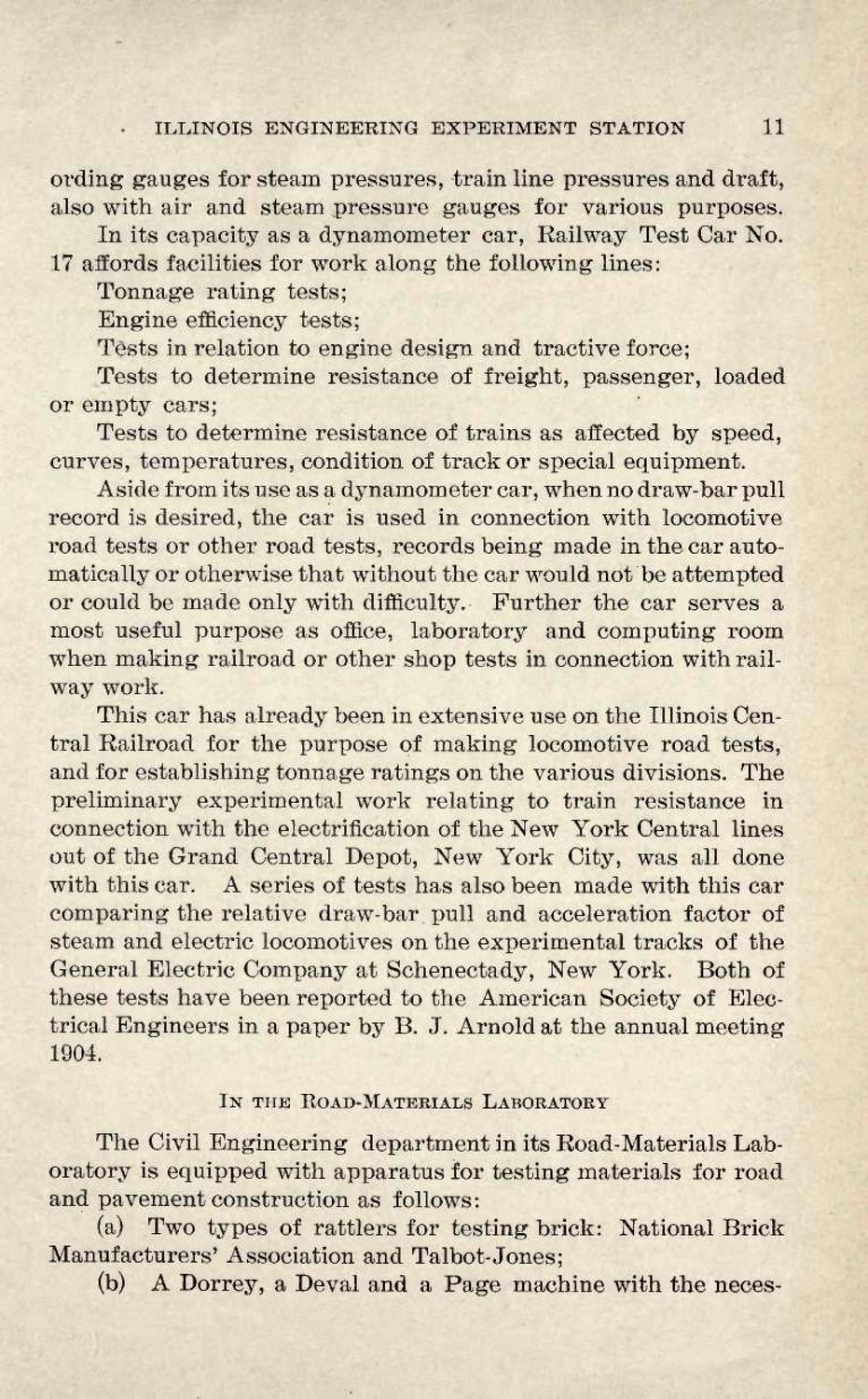| |
| |
Caption: Book - First Years of Engineering Experiment Station (1906)
This is a reduced-resolution page image for fast online browsing.

EXTRACTED TEXT FROM PAGE:
. ILLINOIS ENGINEERING EXPERIMENT STATION 11 ording gauges for steam pressures, train line pressures and draft, also with air and steam pressure gauges for various purposes. In its capacity as a dynamometer car, Railway Test Car No. 17 affords facilities for work along the following lines: Tonnage rating tests; Engine efficiency tests; Tests in relation to engine design and tractive force; Tests to determine resistance of freight, passenger, loaded or empty cars; Tests to determine resistance of trains as affected by speed, curves, temperatures, condition of track or special equipment. Aside from its use as a dynamometer car, when no draw-bar pull record is desired, the car is used in connection with locomotive road tests or other road tests, records being made in t h e car automatically or otherwise t h a t without the car would not be attempted or could be made only with difficulty. F u r t h e r the car serves a most useful purpose as office, laboratory and computing room when making railroad or other shop tests in connection with railway work. This car has already been in extensive use on the Illinois Central Railroad for the purpose of making locomotive road tests, and for establishing tonnage ratings on the various divisions. The preliminary experimental work relating to train resistance in connection with the electrification of the New York Central lines out of the Grand Central Depot, New York City, was all done with this car. A series of tests has also been made with this car comparing the relative draw-bar pull and acceleration factor of steam and electric locomotives on the experimental tracks of the General Electric Company at Schenectady, New York. Both of these tests have been reported to the American Society of Electrical Engineers in a paper by B. J. Arnold at the annual meeting 1904. I N THE ROAD-MATERIALS LABORATORY The Civil Engineering department in its Road-Materials Laboratory is equipped with apparatus for testing materials for road and pavement construction as follows: (a) Two types of rattlers for testing brick: National Brick Manufacturers' Association and Talbot-Jones; (b) A Dorrey, a Deval and a P a g e machine with the neces-
| |